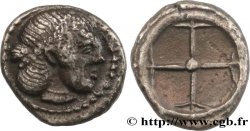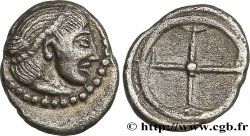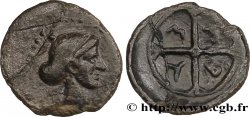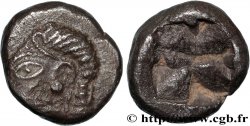bgr_350378 - SICILY - SYRACUSE Tétradrachme
Not available.
Item sold on our e-shop (2017)
Price : 1 750.00 €
Item sold on our e-shop (2017)
Price : 1 750.00 €
Type : Tétradrachme
Date: c. 475-470 AC.
Mint name / Town : Syracuse, Sicile
Metal : silver
Diameter : 24,5 mm
Orientation dies : 12 h.
Weight : 17,37 g.
Rarity : R3
Coments on the condition:
Exemplaire sur un petit flan étroit et épais, recouvert d’une épaisse patine de collection ancienne avec des reflets dorés. Faiblesse de frappe au droit sur la roue du char, mais bien venu à la frappe. Beau portrait, malgré le défaut de coin dans la chevelure de style fin
Catalogue references :
Predigree :
Cet exemplaire provient de MONNAIES XXV, n° 36 et de la collection d’Élisabeth
Obverse
Obverse legend : ANÉPIGRAPHE.
Obverse description : Bige au pas à droite, conduit par un aurige tenant les rênes et le kentron ; le bige est couronné par Niké volant à droite.
Reverse
Reverse legend : N RÉTROGRADE.
Reverse description : Tête d'Aréthuse à droite, les cheveux relevés et retenus par un diadème de perles, entourée de quatre dauphins.
Reverse legend : SURAKOSIO-N
Commentary
Le seul exemplaire répertorié, de mêmes coins que notre tétradrachme, provient de le vente Egger 47, n° 141 (Boehringer, pl. 10, n° 252. Ce type semble beaucoup plus rare que ne le laisse apparaître la typologie. Cassure de coin caractéristique, bien visible sur l’ensemble de la chevelure donnant une impression de “vague”.







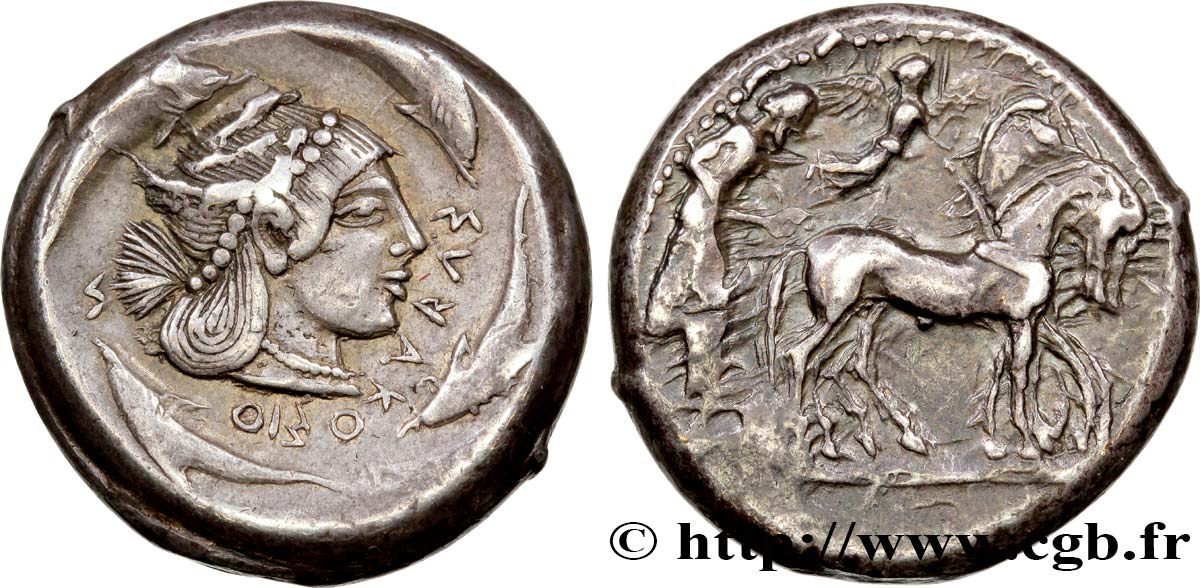
 Report a mistake
Report a mistake Print the page
Print the page Share my selection
Share my selection Ask a question
Ask a question Consign / sell
Consign / sell
 Full data
Full data